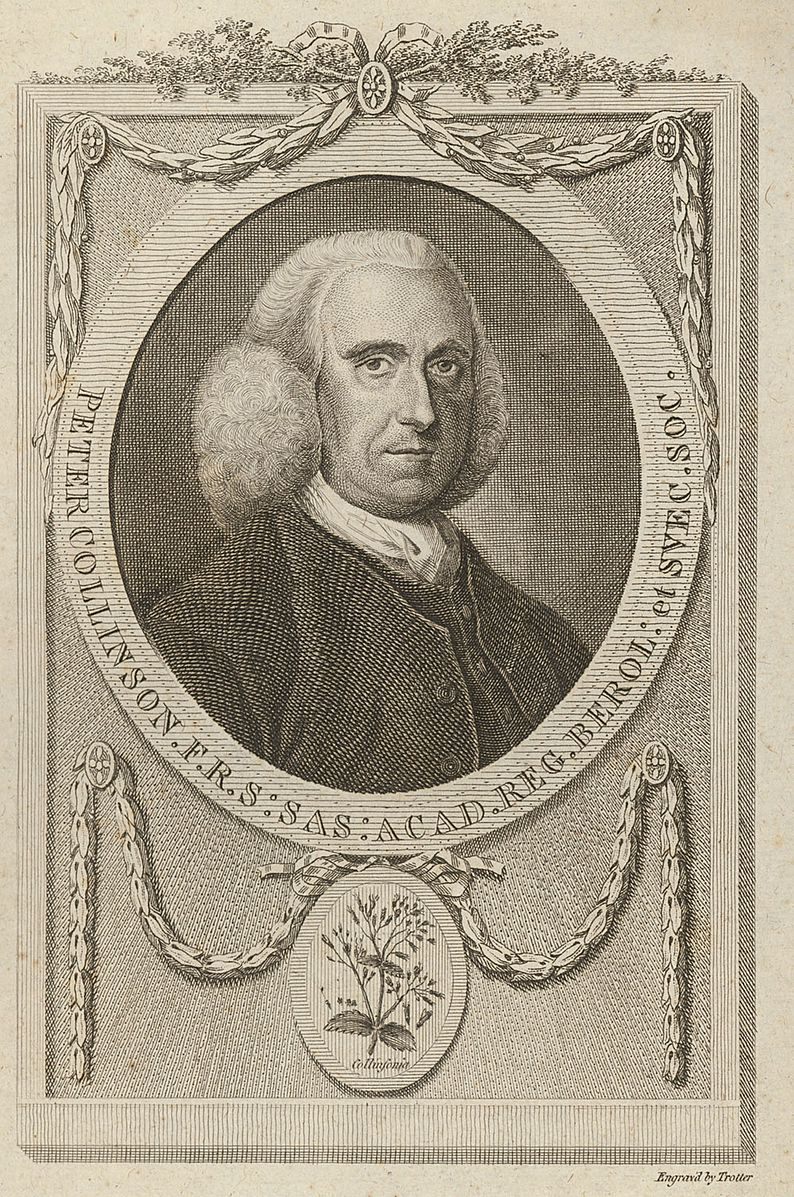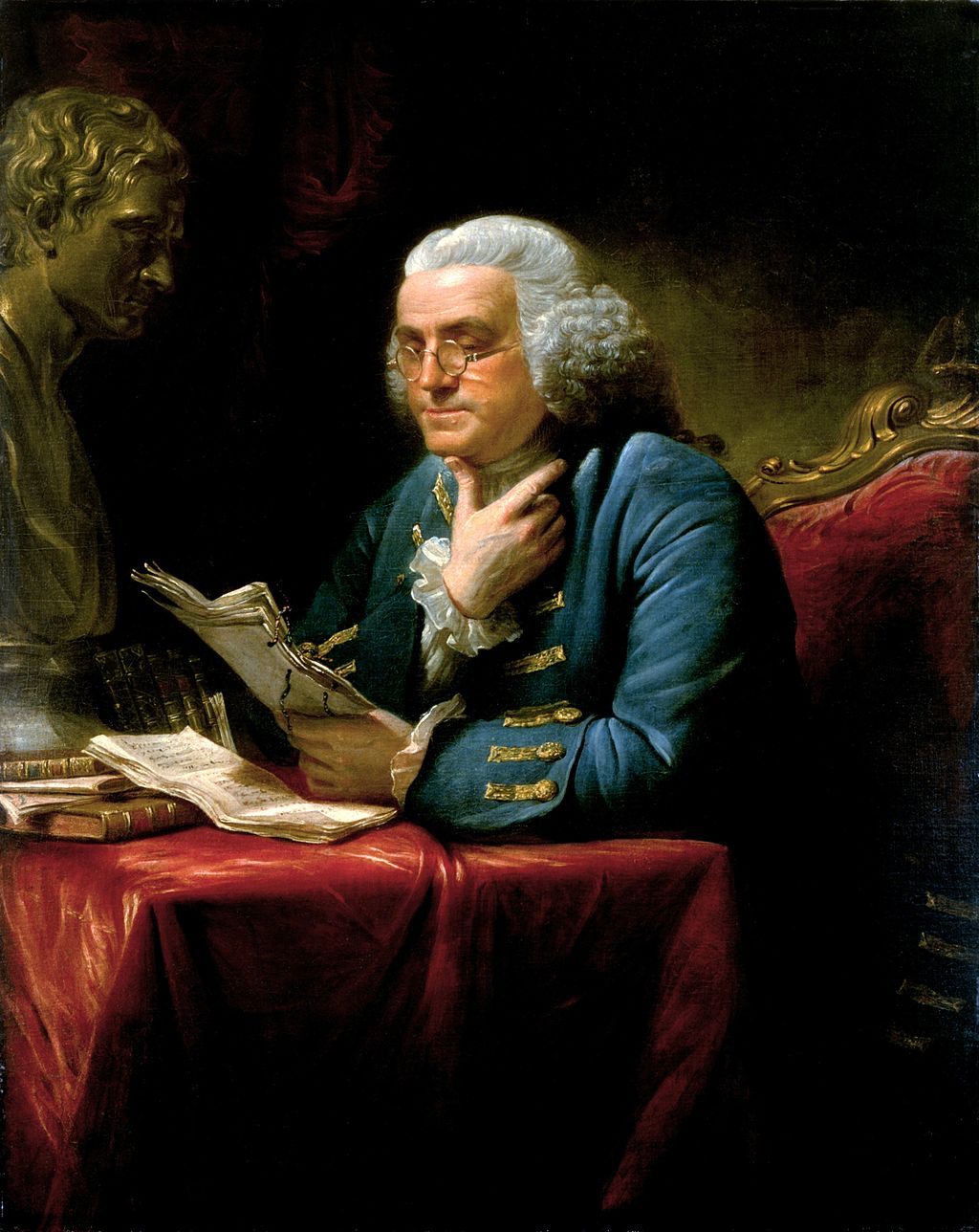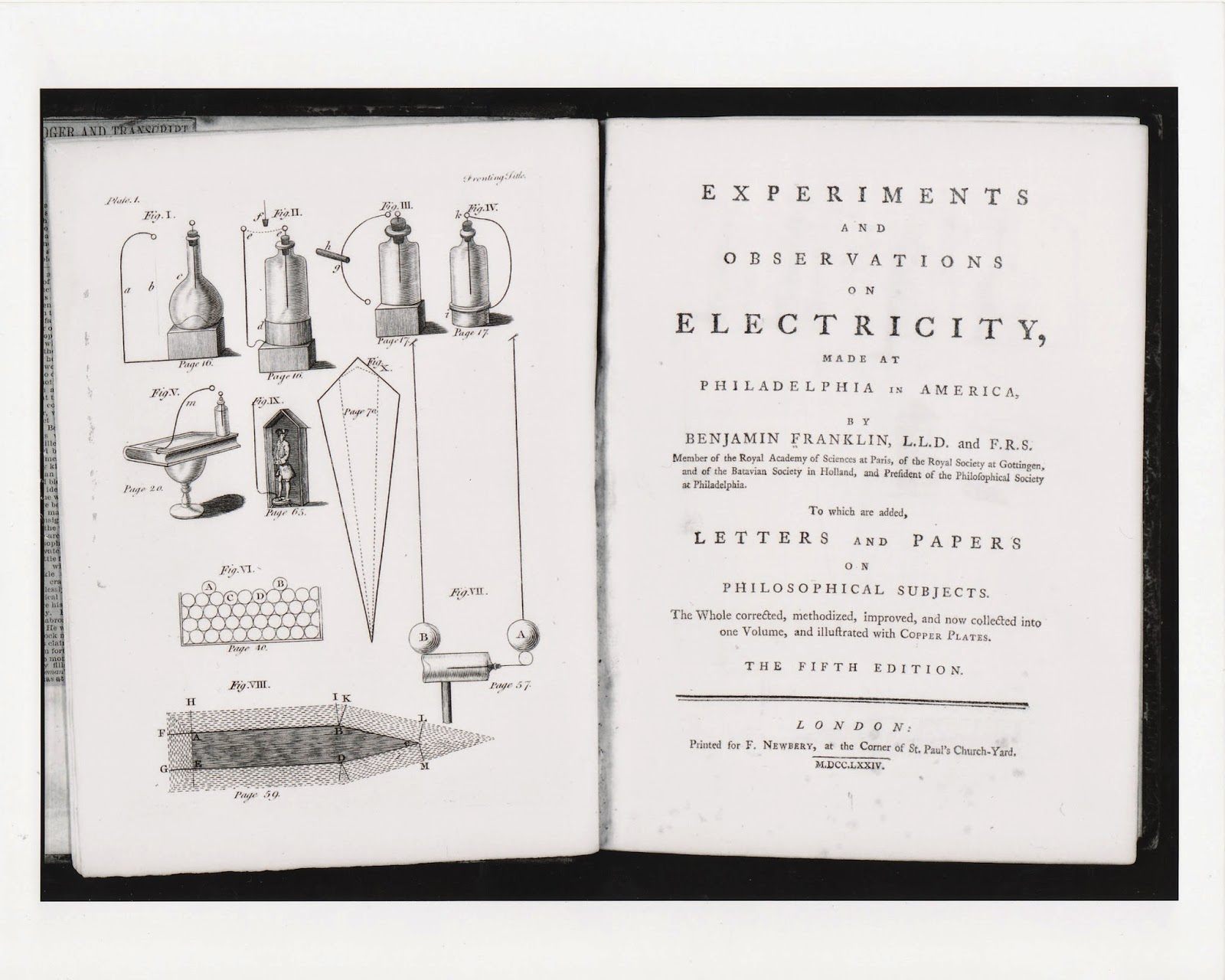Shocking Scenes From Benjamin Franklin’s Experimental Electricity Parties

Franklin flies his fateful kite–while angels that look suspiciously his younger self repeat some of his earlier electrical experiments in the background. (Image: Benjamin West/Philadelphia Museum of Art)
It’s the experiment that launched a thousand elementary school posters—in 1752, Benjamin Franklin tied a key to a kite, took it out in a thunderstorm, and proved that a) lightning is made of electricity and b) crazy-sounding ideas can make you famous forever.
But not even the great Benjamin Franklin went from zero straight to storm-taming. Before he was the savant going out in bad kite weather, Franklin was a different kind of savant—one who spent his free hours electrocuting turkeys, engineering fake spiders, and making his friends kiss each other while holding charged wires. For a good half-decade, Franklin was more MAD Magazine than mad scientist. He was a bonafide electricity weirdo.

As Walter Isaacson relates in Benjamin Franklin: An American Life, Franklin was first introduced to electricity in Boston in 1743, by a scientist-slash-showman named Dr. Archibald Spencer. Spencer was a kind of 18th-century Bill Nye, traveling around the world doing educational parlor tricks. Many of these stunts harnessed the various powers of static electricity—making bits of metal fly across a table, say, or conjuring sparks from a human boy Spencer had conveniently suspended from the ceiling with silk cords.

The “suspending a boy from the ceiling and then shocking him” gambit—a 1740s classic. (Image: Sir William Watson/WikiCommons Public Domain)
Such tricks wowed most crowds, including a newly restless Franklin. After spending 20 years alternating between politics and entrepreneurship, he was looking for a fresh hobby to add to his already-long roster. So when his local library received a static electricity tube from a British scientist named Peter Collinson, Franklin jumped at the opportunity. He memorized Spencer’s repertoire, and then—finding his house “continually full… with people who came to see these new wonders”—made a fleet of additional glass tubes, and taught the new moves to all his friends.
But having his own personal electricity circus was not enough for Franklin. For one thing, he had read about even more cutting-edge things going on in Europe, where a man named Jean-Antoine Nollet had recently shocked 700 monks at once. For another, he wanted to learn exactly why and how all of these wonders worked. So he began goofing around at an even faster pace, and in a more regimented way. Put differently, he began experimenting.
These efforts quickly took over his life. “I never was before engaged in any study that so totally engrossed my attention and my time,” he wrote in 1747 to Collinson, who had become a frequent correspondent. He created imitation lightning by pulling an electrified wire over a china plate embossed with gilt flowers. He made his friends rub the static-making tube like a genie’s lamp while touching various items, in order to trace exactly where the resulting sparks were coming from, and where they were headed. Once he figured that out, he had these long-suffering friends perform an “electrical Kiss,” arranging the various newly discovered conductors and insulators so that “when their Lips approach, they will be struck and shockt.”

Peter Collinson, Franklin’s trusted correspondent and fellow electricity fanboy. (Image: T. Trotter/WikiCommons Public Domain)
Franklin was also, as far as we know, the first person to punk people with electricity. He made a spider out of cork and thread, and “animated” it by suspending it over two electrified wires, so that it swung back and forth between them. Such a spider appears “perfectly alive to Persons unacquainted,” Franklin wrote, giving a good sense of what his sisters’ lives were probably like. He also designed a “Magical Picture” of King George, wired up such that when someone touched the king’s gilt crown, “he will receive a terrible Blow and fail in the Attempt.” “If a Ring of Persons take a Shock among them the Experiment is called the Conspiracy,” wrote Franklin. Politically charged humor.
Communicating these designs and results to his peers in writing forced Franklin to come up with new words, like “positive,” “negative,” and ”battery.” “These terms we may use till your Philosophers give us better,” he wrote to Collinson.
As of today, no one, philosopher or otherwise, has topped those words. This deference, though, hints at Franklin’s position. In just a few short decades, the concepts he was now teasing out through strange contraptions and kissing contests would power the world. But for now, they were mostly good for joy buzzers and party tricks.

Franklin puzzling over a letter. He had to rely on written correspondence because no one had yet figured out how to harness electricity to invent email. (Image: David Martin/WikiCommons Public Domain)
It was with great awareness of this that Franklin designed his ultimate stunt: an electrical feast. In April of 1749, describing himself as “Chagrin’d a little” that his five years of experiments had come up with “Nothing… of Use to Mankind,” Franklin proposed to Collinson a kind of blowout bash to mark the beginning of summer and, thus, the end of the electrical experiment season (people are less willing to be zapped for science when it’s hot out).
The party would take place on the banks of Philadelphia’s Schuylkill River, and would be a charged-up bonanza. Cocktail hour would feature flaming shots, sparked by a current that was passed through the river from a battery on the other side. For dinner, “a Turky is to be killed… by the Electrical Shock; and roasted by the electrical Jack, before a Fire kindled by the Electrified Bottle.” (A well-zapped turkey, he later wrote, is “uncommonly tender.”) Next up was a toast to “the Healths of all the Famous Electricians in England, France and Germany,” drunk “under the Discharge of Guns from the Electrical Battery,” and out of “Electrified Bumpers”—special glasses Franklin designed that (surprise!) shocked would-be imbibers on contact.

The frontispiece and title page of Franklin’s “Experiments and Observations on Electricity,” originally published in 1754. (Image: Smithsonian Libraries/Public Domain)
Although scholars are divided on whether Franklin actually threw this particular party, he definitely practiced each of the proposed activities within it. Indeed, he nearly killed himself electrifying the turkey, an experience he described as both painful and embarrassing. That he didn’t die or give up is fortunate—two years later, Franklin’s high-flying kite experiments brought him worldwide fame, and in 1753, he published his Experiments and Observations on Electricity, which earned him his era’s equivalent of the Nobel Prize.
And today, of course, nearly everything we do rides on positive and negative charges—the very same ones that first revealed themselves in fake spiders, joke crowns, and flaming shots.







Follow us on Twitter to get the latest on the world's hidden wonders.
Like us on Facebook to get the latest on the world's hidden wonders.
Follow us on Twitter Like us on Facebook